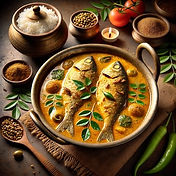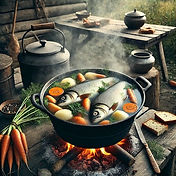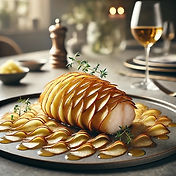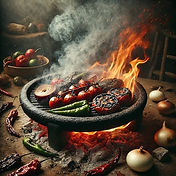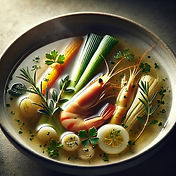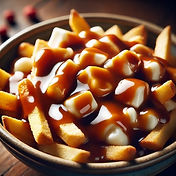Top Chef ™: World All-Stars
Season:
Week:
Elimination Challenge

The chefs were asked to create vegetable-forward dishes, where proteins served as the accompaniment. The dishes were served at the Temperate House in Kew Gardens. The guest judge was chef/director Angela Hartnett. Other diners in attendance included chef/owners Adam Handling and Brett Graham, chef patron Vineet Bhatia, and Kew Gardens botanical horticulturist Helena Dove.
Padma Lakshi: "For your first Top Chef ™ elimination challenge, we want you to create a vegetable forward dish where the protein is used more like a seasoning or an accent."
Tom Colicchio: "Vegetables are where all our flavor comes from, and more chefs are really focusing so much on produce."
Padma Lakshi: "This is an individual challenge. You'll each have £250 to shop at Whole Foods Market. Then tomorrow you'll have 2 hours to prep and cook at the Royal Botanic Gardens in Kew - a UNESCO World heritage site. You'll be serving a distinguished table of chefs from the United Kingdom. And your first guest judge of the season will be Michelin starred chef and Officer of the Order of the British Empire, Angela Hartnett."

Get recipes ...
Subscribe to our weekly recipes and culinary tips from streamed cooking shows.
Dishes prepared in
Top Chef ™: World All-Stars
Chef Luciana: "I also used cassava. It's a Brazilian root vegetable. It was brought to Africa by the Portuguese to help with the hunger. So I made cassava in different ways. A bisque, little pieces of cassava and tapioca, which is the cassava starch. The protein is prawns."
Judging
Tom Colicchio: "The flavor is really good. I think the cassava is really well seasoned. But the Shrimp, I don't know if you need it."
Chef Victoire: "When I was young in Congo, we were so poor that every day we ate cassava. I tried to give some flavor to cassava with cocoa butter. For protein I used scallop confit with carrots and gazpacho."
Judging
Gail Simmons: "Victoire's gazpacho was lovely."
Angela Hartness: "I really liked the cassava bread."
Helena: "I did. I liked it."
Tom Colicchio: "But I think the scallops kind of, again, were not worked into the dish."
Chef Nicole: "I made a summer bass with garden vegetables, onion soubise and fondant potato."
Judging
Brett Graham: "It all felt like an old fashioned dinner, maybe."
Angela Hartnett: "Oh, yeah. That feels very old European."
Gail Simmons: "I found it charming in its quaintness. But the fish feels completely disconnected."
Chef Gabri: "I made a reinterpretation of mextlapique. Charcoal vegetables, confit of corn, black truffle beans, pickled mushrooms and celery. But I forgot to plate my chicken emulsion. The beans were cooked in pork fat."
Judging
Adam Handling: "It looked like a lot of dried things, but as soon as I tasted that puree on the bottom, I thought it was really tasty."
Angela Hartnett: "I mean, I'm all for charring, but that just left this burnt sort of taste in my mouth."
Vineeet Bhatia: "Such a shame he forgot the espuma (emulsion). It would have actually changed the dish a lot. Taken it to a different level."
Chef Dawn: "I made a patty with onion squash with West Indian flavors, coconut broth on the outside and salad of lobster and mushrooms at the bottom.
Judging
Angela Hartnett: "I mean, listen, I'm English. We love a bit of pastry. What can I say? "
Padma Lakshi: "The pastry is what this dish is about and not vegetable."
Chef Samuel: "I made a tiger prawn carpaccio and prawn head emulsion sauce. There are different vegetables, and vegetable vinaigrette and a prawn cracker on the top."
Judging
Gail Simmons: "Samuel's carrots are cooked nicely."
Tom Collichio: "The vegetable work was actually pretty good."
Padma Lakshi: "But that fish just ate so slimy. "
Brett Graham: "I sort of picked it up and there it is. Poo pipe, if that's a professional word for it.
Padma Lakshi: "He didn't devein the shrimp."
Other judge: "I got the same thing. Not very refined. He needed to clean it."
Chef May: "I call this "garden salad". On the bottom is cured English sea bass and then there is a Thai spicy emulsion on the side."
Judging
Gail Simmons: "It was vibrant. I thought she cooked each individual vegetable beautifully. "
Angela Hartnett: "Got that heat. The heat does bring it together in the end. "
Chef Begona: "I made Tallarines of Pumpkin with Duxelles and with cream made from raw milk."
Judging
Tom Collichio: "Begona's dish. This is crazy. You eat it, and it's so interesting. And you go for another bite and say you taste something else. You go for another bite, you taste something else.
Helena: "Begona also understood the texture of what you can do with pumpkins because quite often we overcook them."
Chef Buddha: "I cooked eggplant with shrimp and shiitake, silken tofu, pickled purple korrabi. I wanted to keep it more Japanese."
Judging
Gail Simmons: "I appreciate how subtle the flavors of Buddha dish are. "
Brett Graham:"It's poached in dashi and sucks in the flavor of the broth."
Chef Dale: "I made roasted and pureed eggplant with a little tomato relish of stewed peppers with best spring lamb."
Judging
Vineet Bhatia: "Dale's was good. Aubergine (eggplant) was cooked perfectly, nice and fleshy."
Angela Hartnett: "I don't think that Dale needed the lamb."
Chef Charbel: "I wanted to use the onion as the star of the dish. I roasted and then I also did onion puree in the bottom, chicken jus on the side, and sumac tuiles"
Judging
Angela Hartnett: "Chabel's dish was much braver."
Vineet Bhatia: "Simple ingredients done technically perfectly."
Tom Colicchio: "Then I also love the fact that you take a humble onion and just raise it up to that level."
Brett Graham: "I quite like it that Charbel had a budget of £250 and spent £2.50!"
Chef Ali: "Today I have made pan-fried Sea Bass, with different textures of cauliflower and technique. Cauliflower puree with licorice, pickled cauliflower, and cauliflower couscous. "
Judging
Adam Handling: "The cauliflower was delicious. I'm not sure why the fish was there!"
Tom Colicchio: "Yes, what was the fish there for?"
Helena (Kew Gardens): "It can be scary to take the protein off the plate if you're used to cooking with it."
Angela Hartnett : "I thought it was a safe dish."
Chef Tom: "I made all kinds of variations of carrots ... blistered carrot chutney, carrot glaze, and carrot mousse. Then I made bone marrow dust and green chutney."
Judging
Gail Simmons: "Tom's dish. My first bite was a little sweet, and then my next bite was quite bitter and I loved that."
Brett Graham: "Tom's carrot fitted the brief perfectly about using vegetable forward and meat as a supporting actor."
Chef Amar: "I did an assortment of different vegetables, some glazed and some pickled, Romesco sauce, seared scallop, and an herb oil."
Judging
Tom Collichio: "I thought everyone really focused on the challenge except Amar. His scallop was clearly the star on his plate. That said, his vegetables were probably cooked better than anybody else's."
Chef Sylwia: "I made a (deconstructed) sandwich with the beetroot and goat cheese with kohlrabi reduction and bacon tomato sauce."
Judging
Angela Hartnett: "I thought she really cooked all the vegetables perfectly."
Adam Handling: "I liked the sauce. Wasn't truly a fan of the little sandwiching."
Chef Sara: "I made cover crops with pot liquor, smoked pork, and cornbread. There's a little bacon fat in the cornbread and the pot liquor."
Judging
Vineet Bhatia: "Nice balance of flavors on it. Had a little sweetness. Visually, I think it was a little unappetizing."
Tom Colicchio: "It's just that the sauce is a little murky looking. The pot liquor is something you'd find in the south. It's lovely, but it is not known to be pretty."
Culinary Challenges inspired by
Top Chef ™: World All-Stars
Meen Moilee is a celebrated Kerala fish curry that exemplifies South Indian coastal cuisine. This luxurious dish features firm white fish gently poached in a velvety coconut milk sauce infused with aromatic spices. The preparation begins by sautéing curry leaves, green chilies, ginger, and onions until fragrant, then adding turmeric, ground spices, and coconut milk to create a golden, creamy base. The fish is carefully added last, allowing it to cook just until tender. The hallmark of Meen Moilee is its balanced flavor profile - mild heat complemented by tanginess from tomatoes or sometimes vinegar, sweetness from coconut milk, and brightness from fresh lime juice. Served with rice, this curry represents the perfect harmony of Kerala's abundant seafood and tropical ingredients.
Ukha is a traditional Russian clear fish broth that dates back centuries, revered for its clean, delicate flavors. This aromatic soup begins by gently simmering whole fish—typically freshwater varieties like pike, perch, or sturgeon—with minimal vegetables and aromatics, allowing the pure essence of the fish to shine through.
The preparation is deliberately simple: fish, onions, carrots, bay leaves, black peppercorns, and occasionally potatoes or leeks. What distinguishes ukha is its clarity—the broth should remain transparent, never cloudy. Often finished with fresh herbs like dill or parsley and a splash of vodka, authentic ukha embodies Russian cuisine's philosophy of highlighting natural flavors rather than masking them with excessive seasonings.
Pommes de terre en écailles, meaning "scaly potatoes" in French, is an elegant potato preparation technique that transforms the humble tuber into a sophisticated side dish. Thin-sliced rounds of peeled potatoes are meticulously arranged in overlapping patterns resembling fish scales or roof tiles in a buttered dish. Each layer is brushed with melted butter and seasoned with salt and pepper before the next is added. The assembled potatoes are then baked until the edges turn wonderfully crisp while the centers remain tender.
The result is a visually striking dish with beautiful textural contrast—crispy, golden exterior scales protecting creamy interiors—that elevates any meal with its refined presentation and rich buttery flavor.
Dawadawa is a traditional West African fermented seasoning made primarily from locust beans (Parkia biglobosa), though occasionally from soybeans or other legumes. The preparation begins by boiling the beans until soft, then pounding them to remove the seed coats. The cleaned seeds are boiled again, spread out, and covered with leaves to ferment naturally for 2-3 days. This fermentation process develops a pungent aroma and complex, umami-rich flavor profile. The resulting black paste is typically shaped into balls or patties for storage. Used as a flavor foundation in soups, stews, and sauces across Ghana, Nigeria, and other West African countries, dawadawa adds remarkable depth and nutritional value to countless dishes.
You can buy dawadawa spice here.
Pipian is a rich, traditional Mexican sauce that exemplifies the complexity of pre-Hispanic cuisine. Made from ground pumpkin or squash seeds (pepitas), this velvety sauce incorporates various chiles, spices, and sometimes nuts or seeds like sesame or peanuts. The ingredients are toasted, ground into a paste, and simmered with broth until thickened to a smooth consistency. Pipian can range from vibrant green (pipian verde) to deep red (pipian rojo), depending on the chiles used. Commonly served over poultry or pork, this sauce offers a nutty, earthy flavor profile with subtle heat that showcases Mexico's remarkable ability to balance complex flavors into harmonious dishes.
Tatemado is a traditional Mexican cooking technique most commonly associated with Jalisco cuisine. This slow-cooking method involves placing ingredients—typically meat such as pork, goat, or beef—into clay pots that are partially buried in hot coals or placed in an underground pit oven. The pots are sealed with masa (corn dough) to trap moisture and smoke, allowing the meat to cook gently for several hours until incredibly tender. This process imparts a distinctive earthy flavor while preserving the meat's natural juices.
Tatemado dishes are often seasoned with regional spices, chiles, and herbs, creating complex flavor profiles that showcase Mexico's rich culinary heritage. The result is meltingly tender meat with unparalleled depth of flavor.
Nage, pronounced "nahj," is a fragrant, aromatic broth used in French cuisine primarily for poaching seafood and vegetables. This delicate liquid is typically created by simmering wine, water, or fish stock with aromatic vegetables (onions, celery, fennel) and herbs. After cooking, the ingredients may be strained out, and the remaining liquid can be reduced and enriched with butter to create a "beurre monté" sauce.
The term 'nage' is also used to describe dishes cooked in this liquid—referred to as "à la nage"—resulting in light, flavorful preparations that highlight the natural taste of the main ingredient while infusing it with subtle complexity.
Poutine: Quebec's Beloved Comfort Food
Poutine is a Canadian culinary treasure originating from Quebec in the late 1950s. This hearty dish consists of three essential components: crispy french fries, cheese curds, and rich brown gravy poured generously over the top, creating a delicious mess of contrasting textures and flavors.
The magic of poutine lies in its seemingly simple yet perfectly balanced combination. When done right, the fries remain crisp on the outside while soaking up savory gravy. The cheese curds, which must be fresh to achieve their signature 'squeak' between your teeth, soften slightly from the heat without fully melting. The gravy ties everything together with its savory depth. It is basically a roux, traditionally thickened with chicken or beef stock but a vegetarian option is just as good, with flavor from umami-rich mushrooms or earthy beets.
To create authentic poutine at home, begin with freshly cut potatoes, twice-fried for optimal crispness - first at a lower temperature to cook through, then at a higher temperature for that golden exterior. The cheese curds should be room temperature and as fresh as possible. Their slightly tangy flavor and distinctive texture cannot be substituted with shredded cheese. For the gravy, create a flavorful stock reduction, thickened to a consistency that coats the back of a spoon without being gloopy.
Assembly requires careful timing. The fries must be piping hot from the fryer, immediately topped with curds and quickly covered with steaming gravy that's hot enough to warm the curds but not so hot it melts them completely.
While traditional poutine remains a beloved classic, modern variations might include toppings like pulled pork, smoked meat, or even lobster. Whether enjoyed from a roadside stand in rural Quebec or prepared in your kitchen, poutine represents comfort food at its finest. it is unpretentious, indulgent, and deeply satisfying.
Soba Cha (also known as Soba-Cha and Sobacha) is Japanese buckwheat tea. It is drunk hot or cold, and is gluten-free and caffeine-free and apparently tastes nutty and slightly sweet.
It appeared three times in Top Chef: Wisconsin ™. The first showing was in Restaurant Wars when Danny's team, under his leadership, served up cold Soba Cha as a welcome drink. It wasn't well received.
In reparation, Danny re-introduced it in week 12 when he infused mushrooms into Soba Cha for his fish dish. This time, the judges regretted that he had buried the flavor of the buckwheat tea in very powerful mushroom flavors and would have preferred the essence of the tea to shine through.
Danny didn't try again, but Dan used Soba Cha in his Smoked Dashi and this time it went down a storm.
Hummingbird cake is a Jamaican banana and pineapple spiced cake which has been eaten in the southern United States since the 1970s. It is a leavened cake with a salty cake and often contains pecans.
Mofongo is a Caribbean dish originating in Puerto Rico and the Dominican Republic. Made by mashing ripe plantains with fat, garlic, spices, and (optionally) pork crackling, it is then shaped into a ball. The dish is famous for its complex and contrasting textures, with fried plantains that are crispy on the outside and soft on the inside. It is often found topped with melted cheese and served with a clear garlic broth.
Danny, in the 'spoiler' for the Top Chef Wisconsin Finale, was heard to say that he wanted to get fresh scallops for his first course and treat them in the style of "Leche de Tigre".
Leche de tigre, (translates to tiger's milk), is the Peruvian term for a citrus marinade that cures fish or seafood. Also known as leche de pantera, this marinade usually contains lime juice, onion, chile, and fish sauce.

















